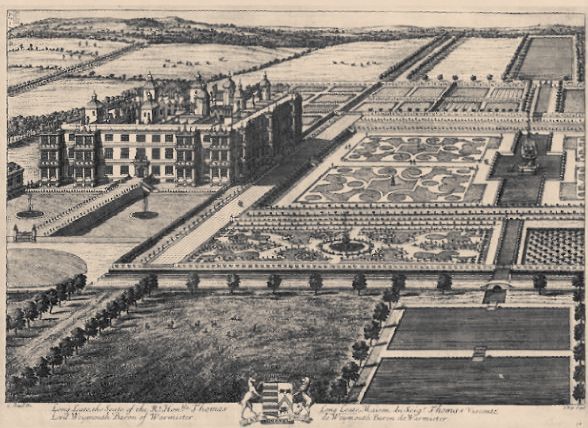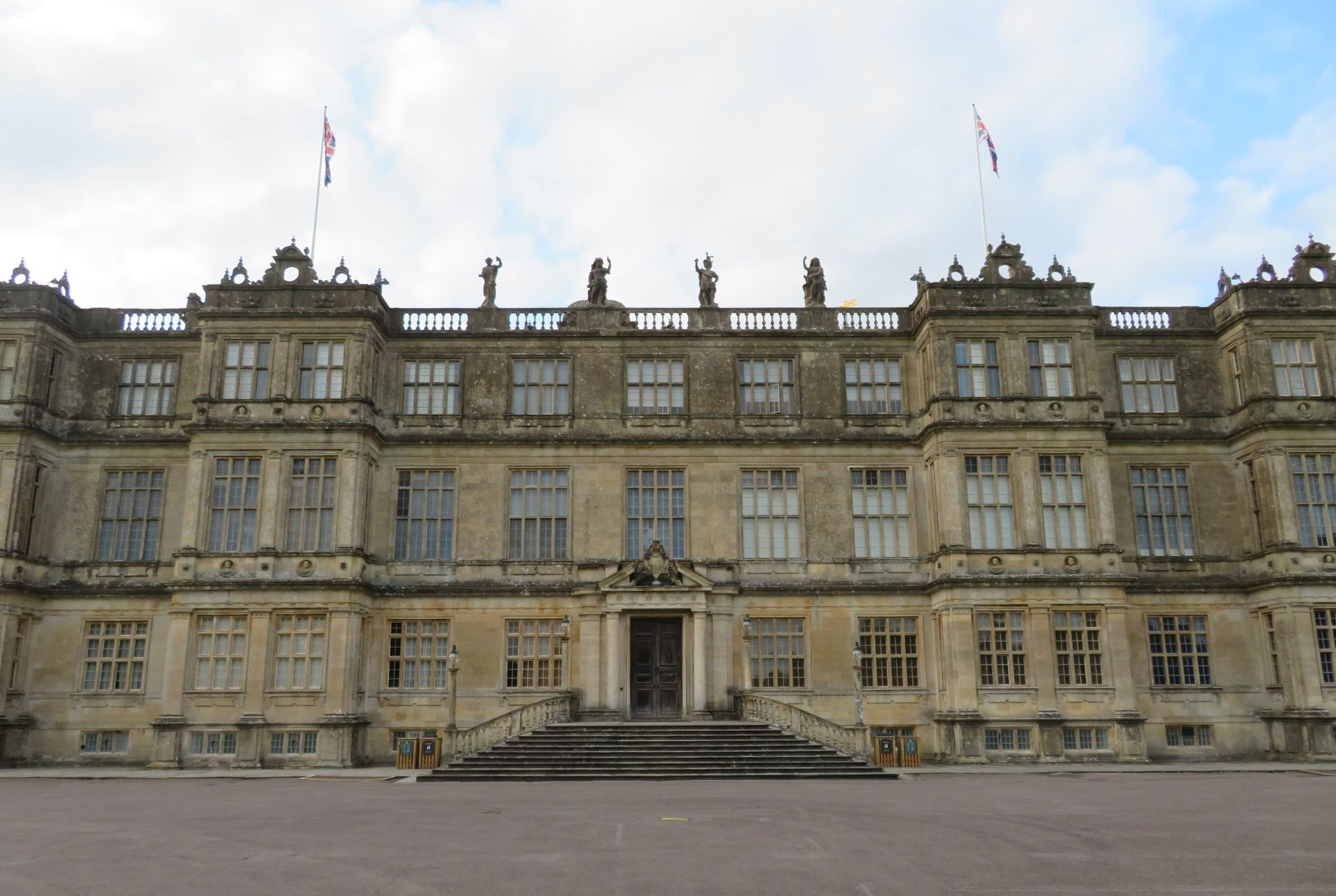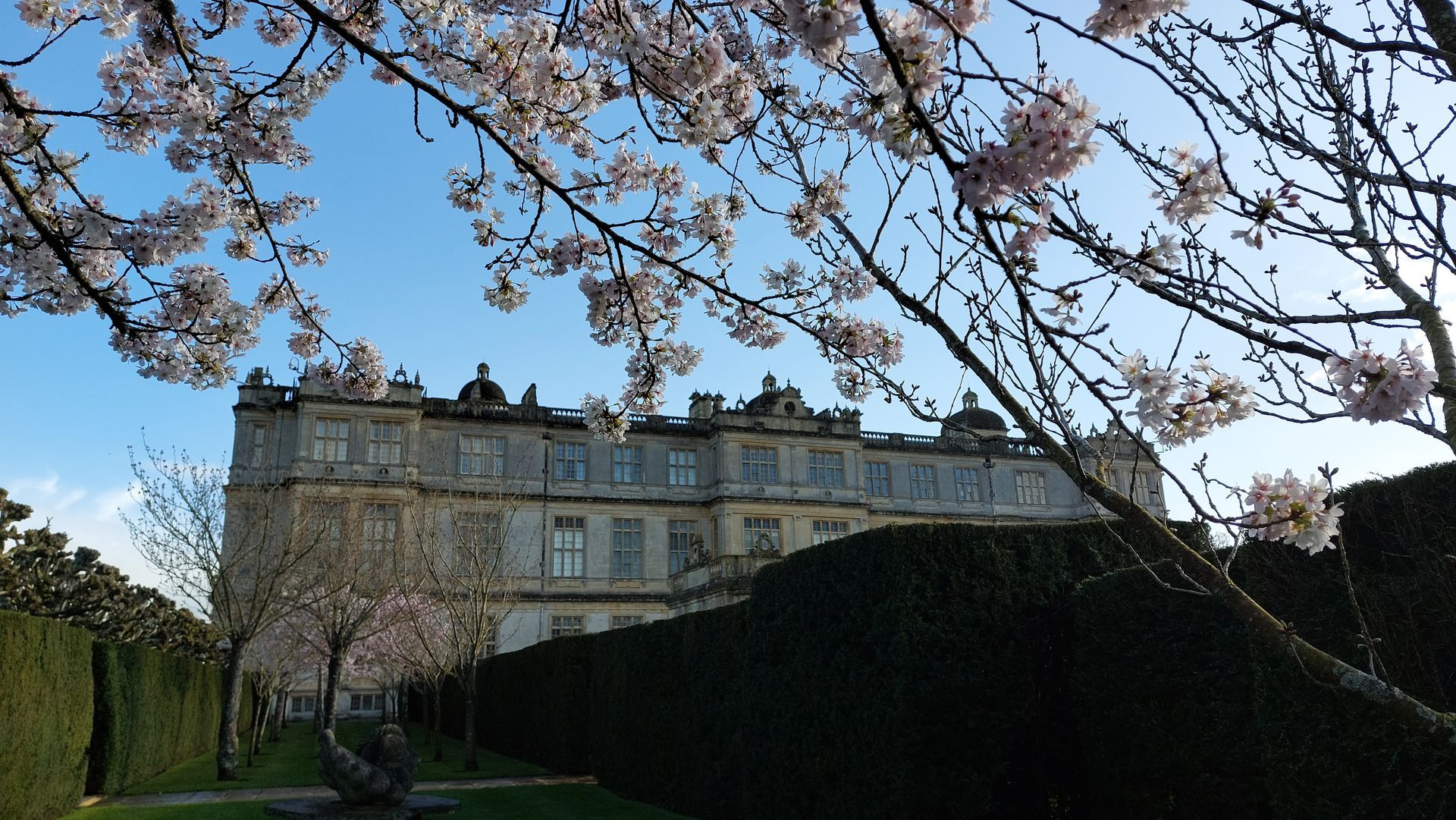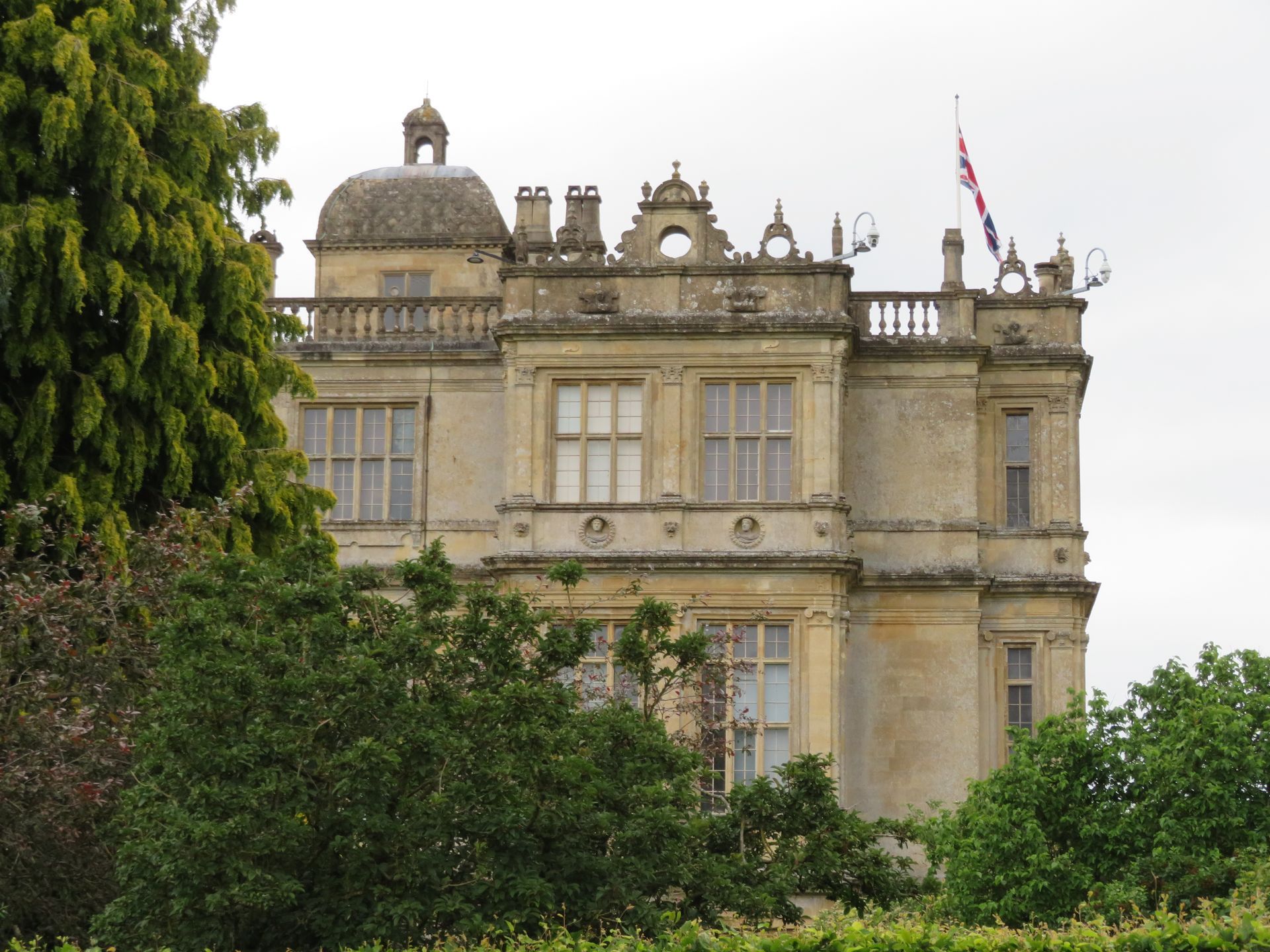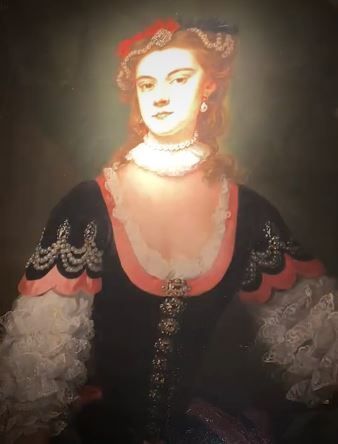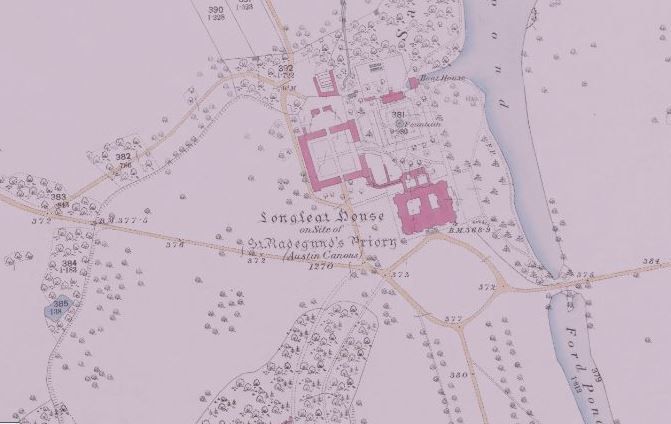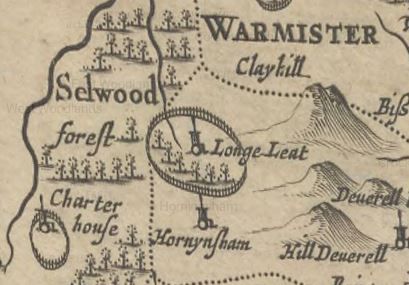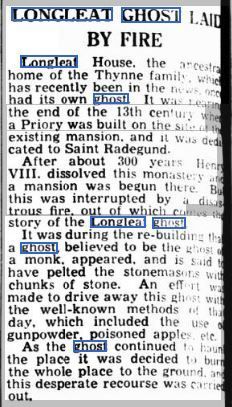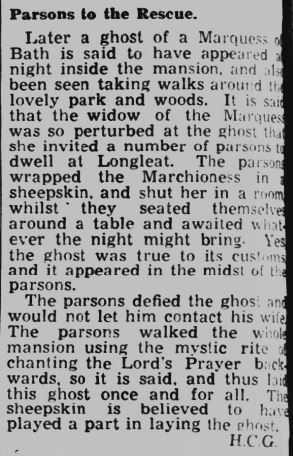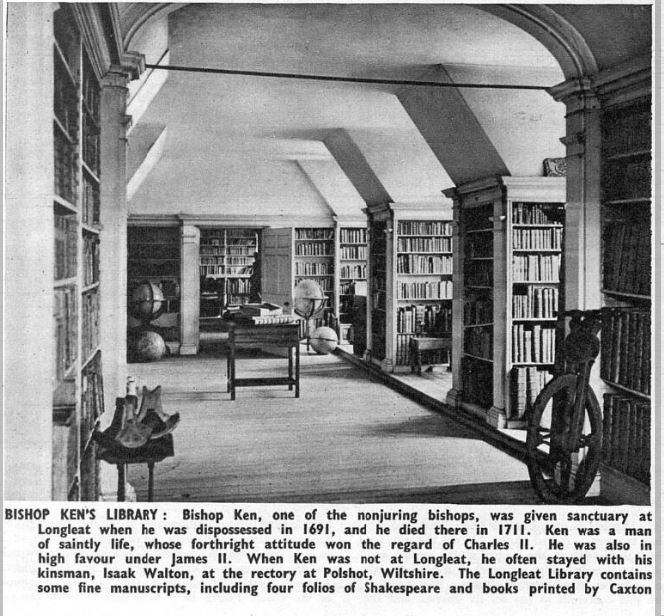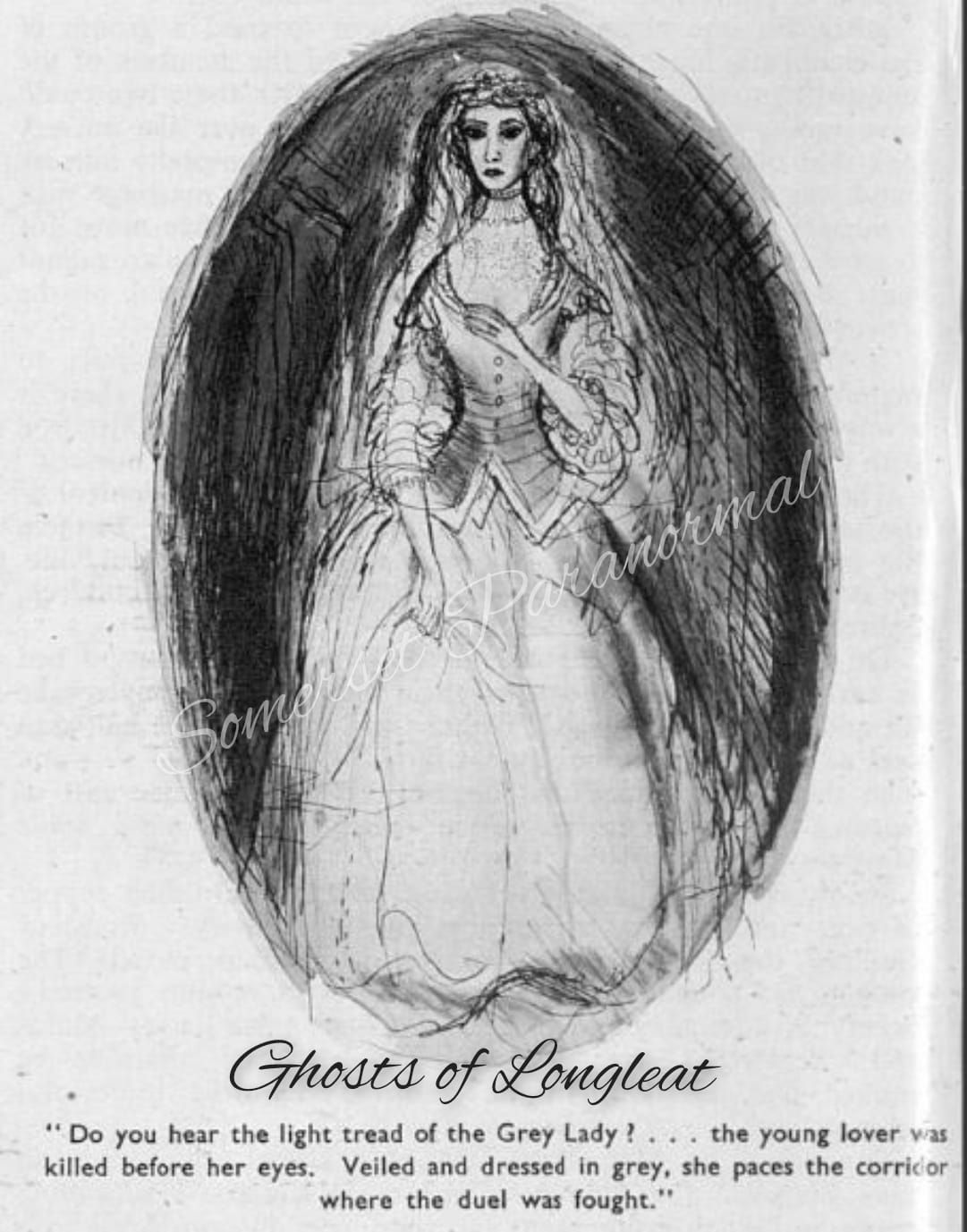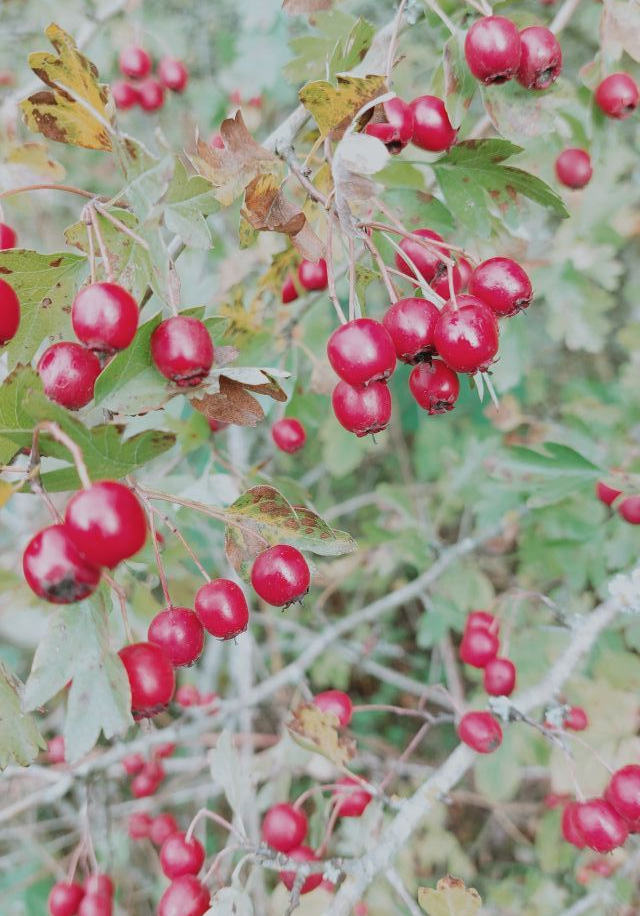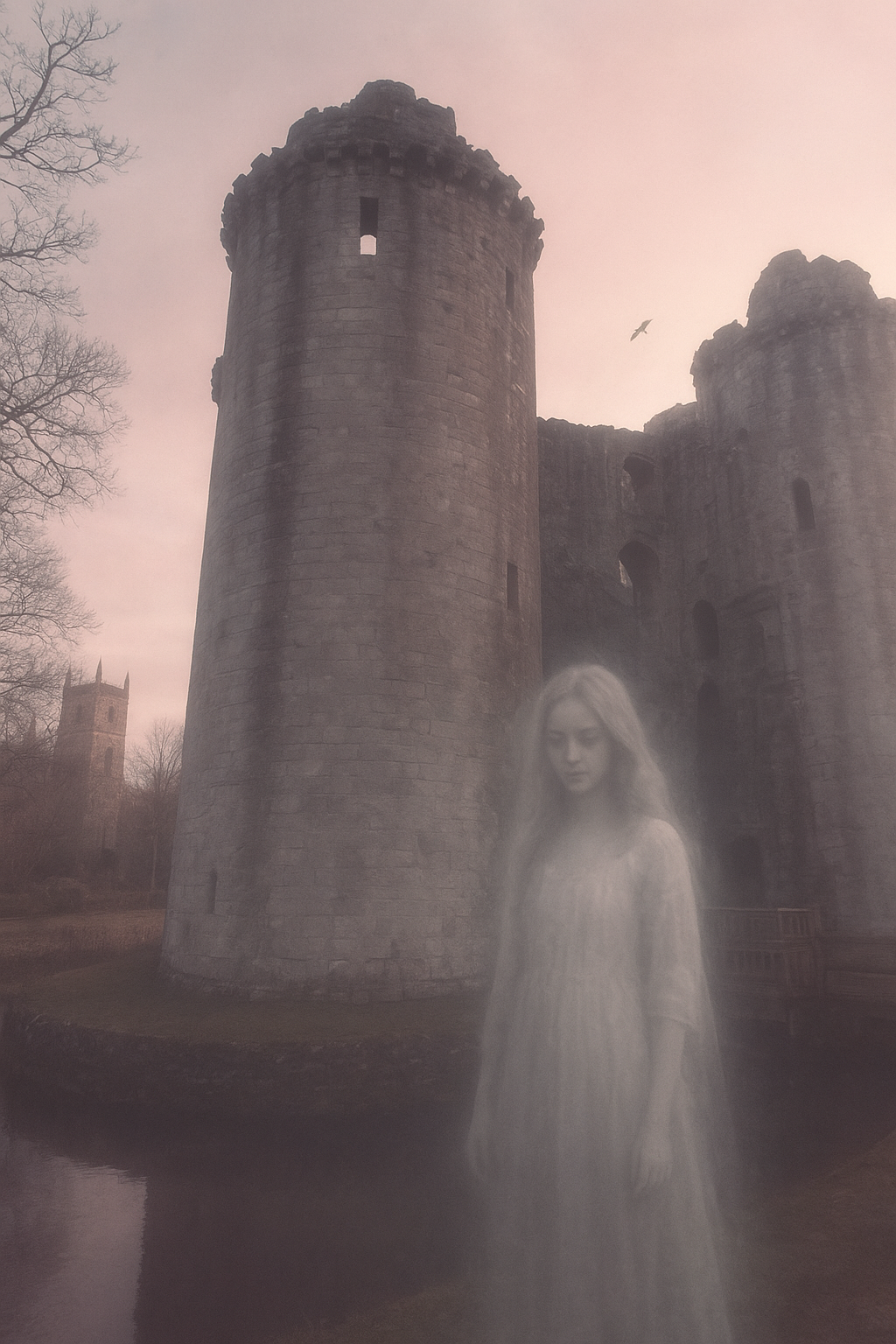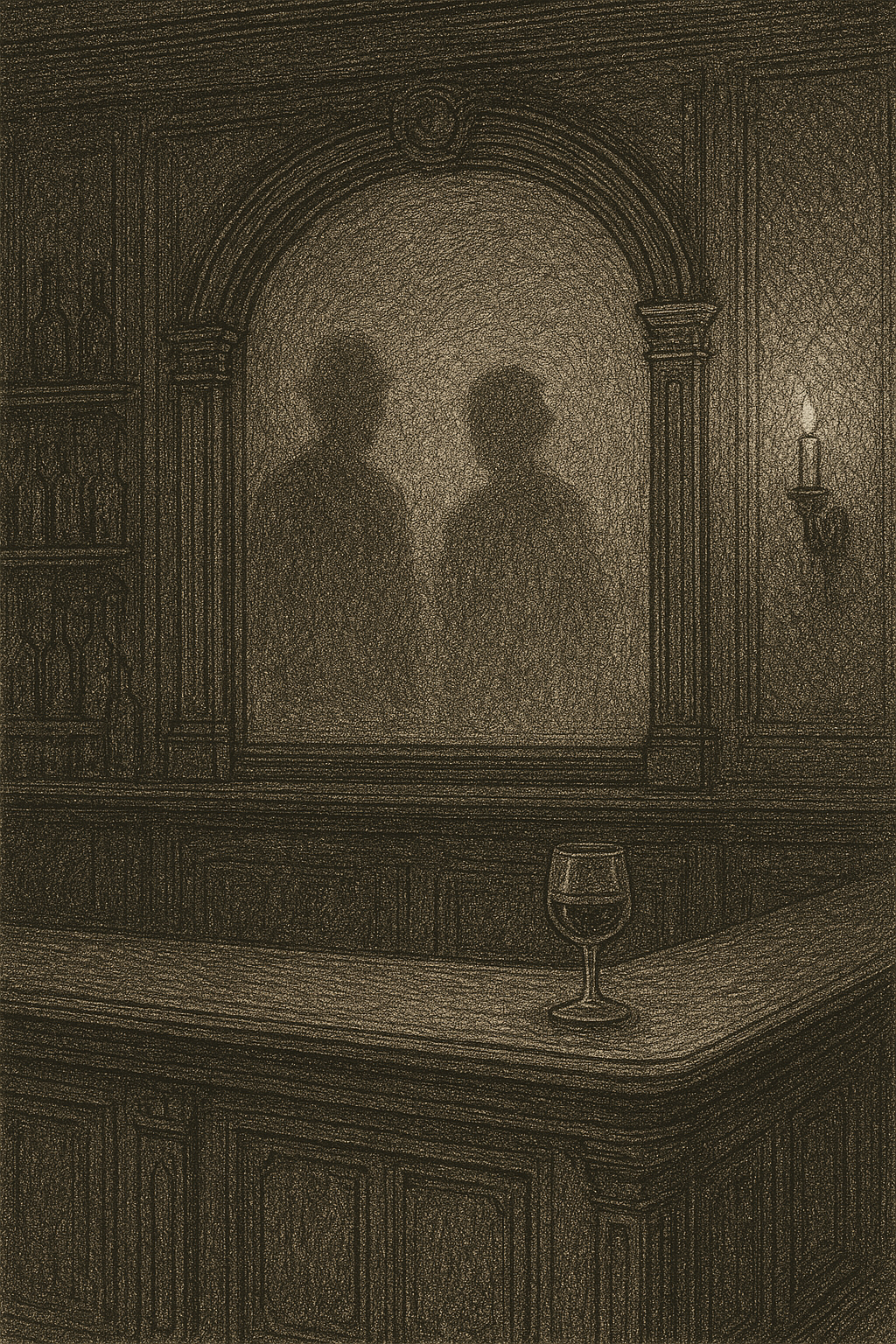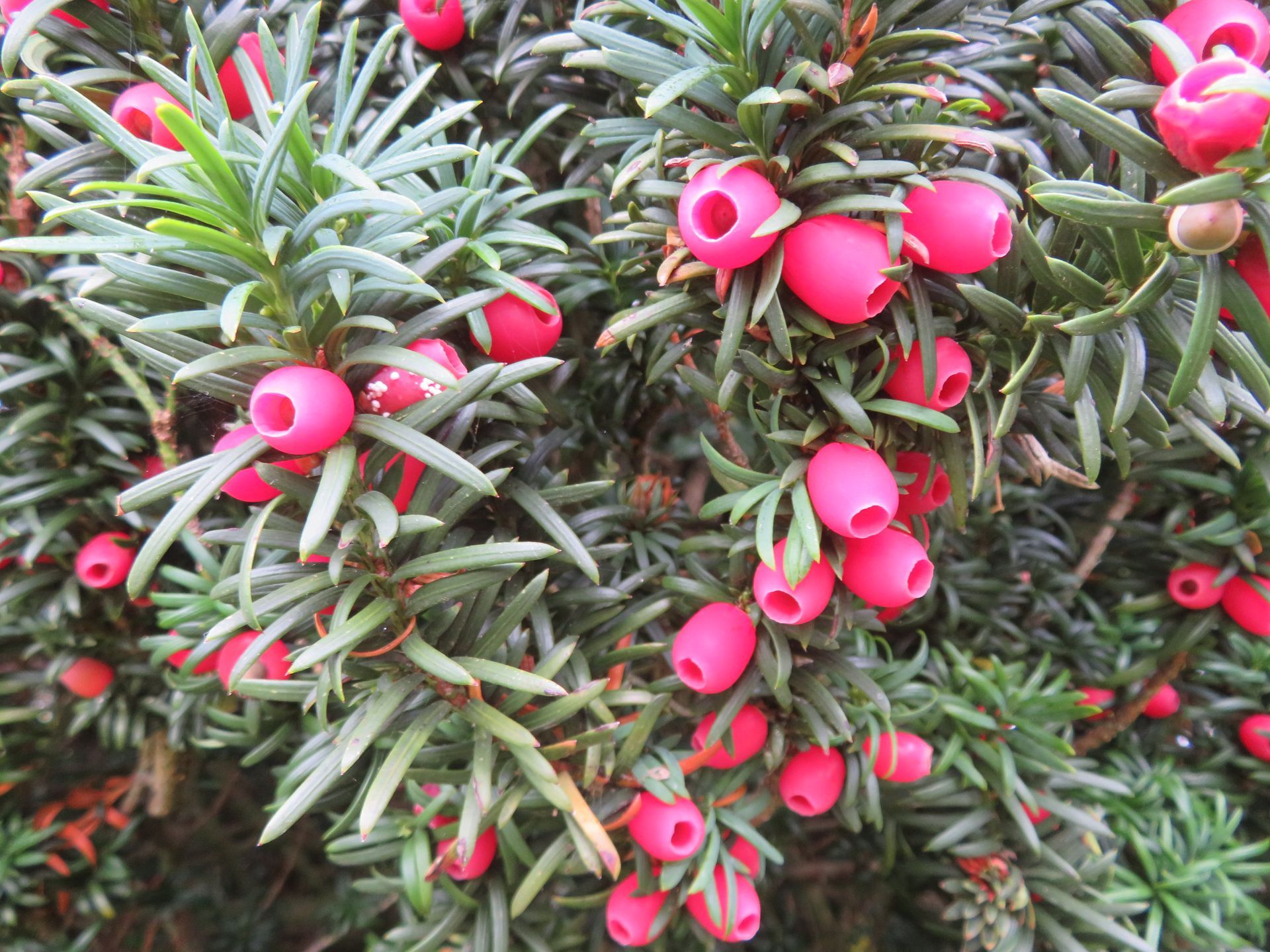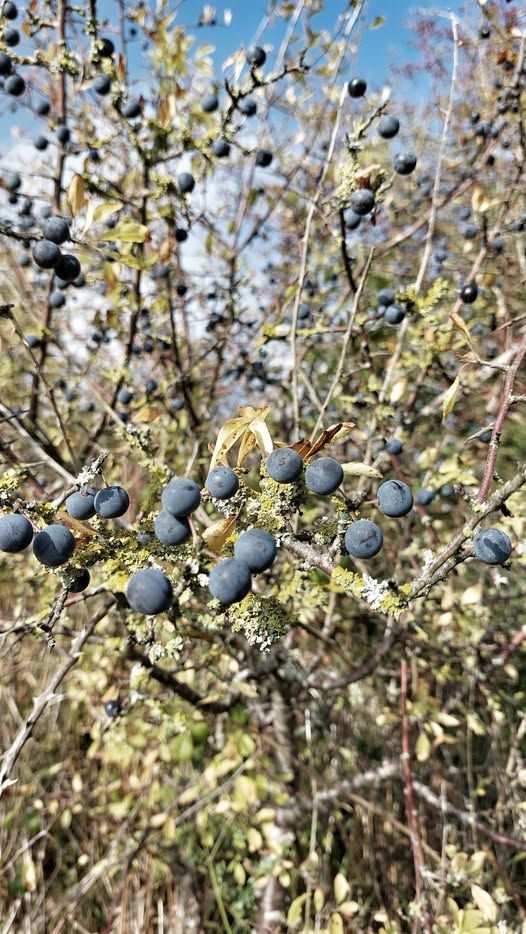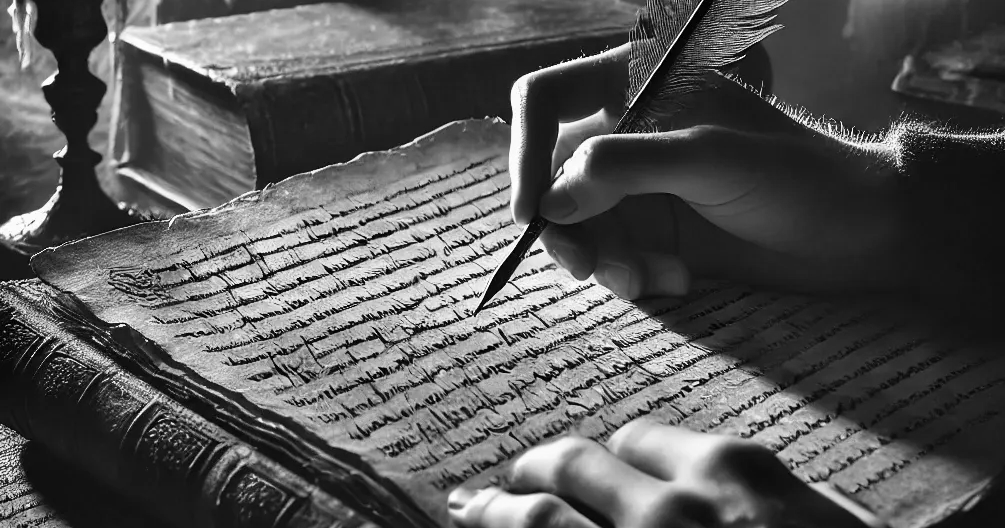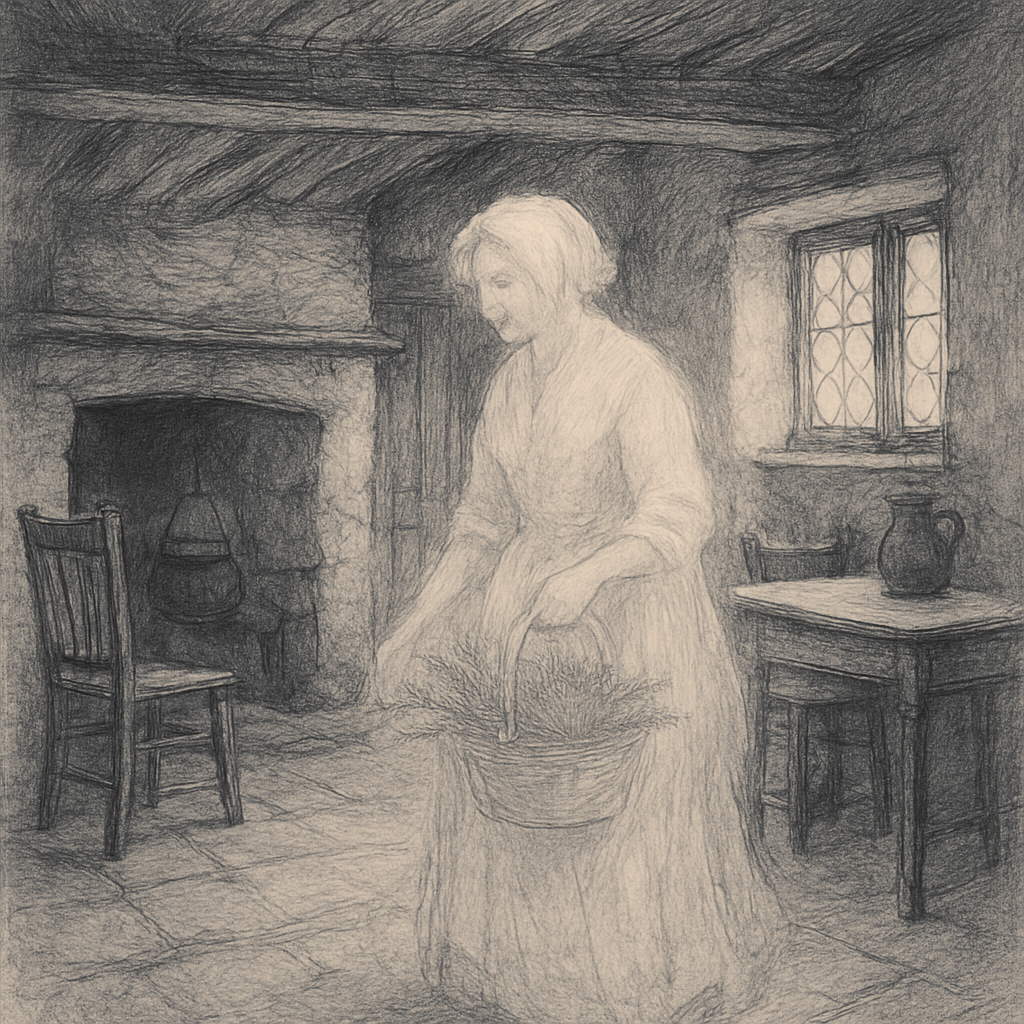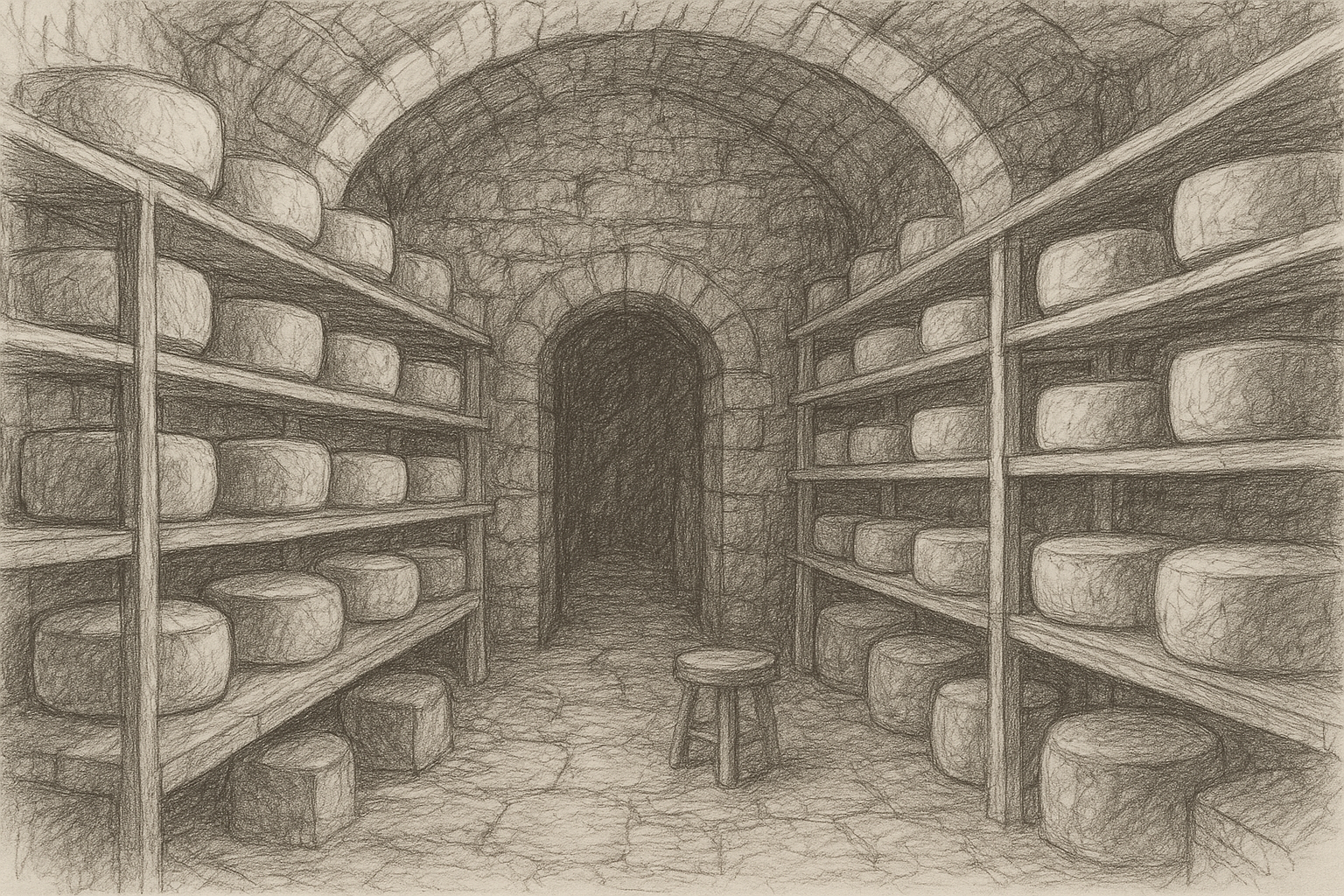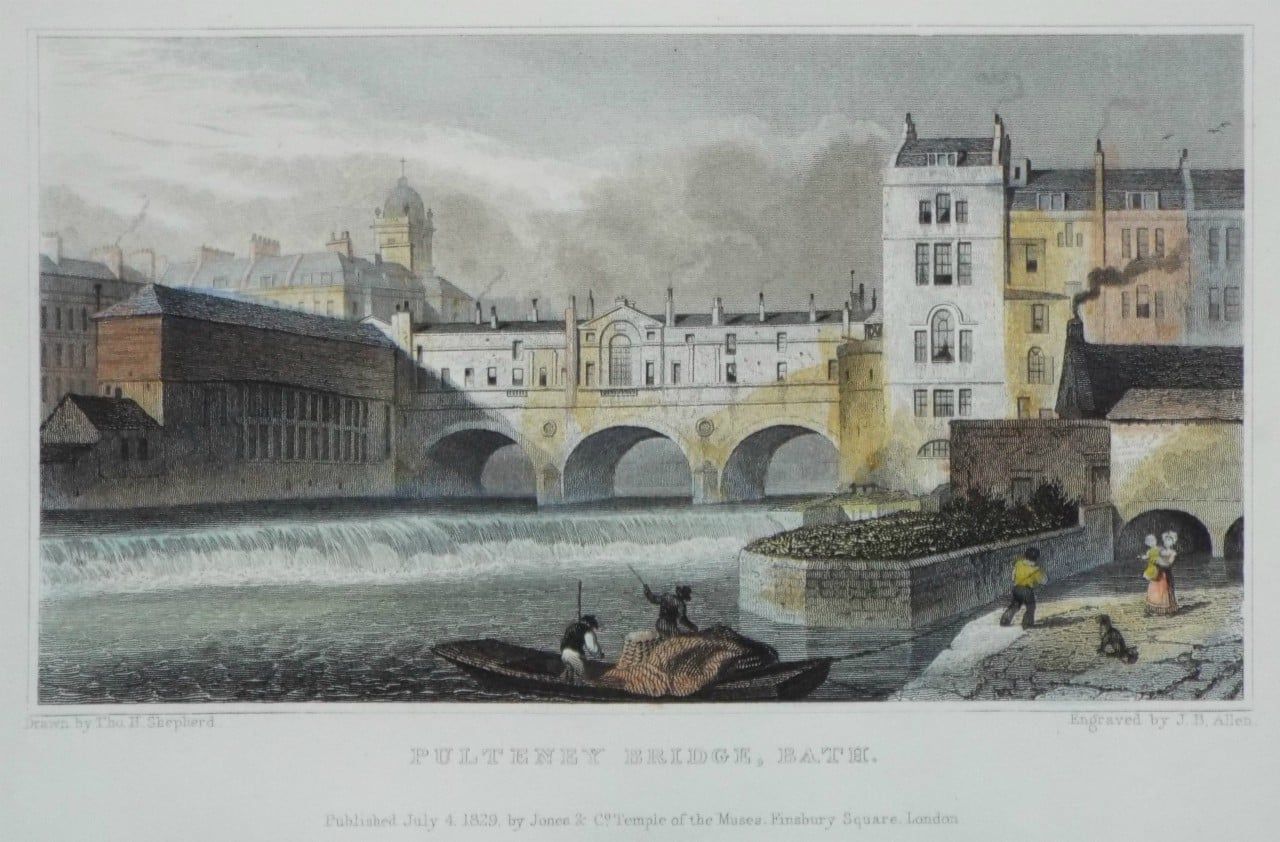Ghosts of Longleat
Longleat House - Just on the border of Somerset & Wiltshire
History -
Longleat is a stately home about 4 miles west of Warminster.
Set in 1,000 acre of parkland landscaped by Capability Brown, along with 4,000 acres of let farmland and 4,000 acres of woodland.
It was previously an Augustinian priory.
The name comes from "leat", an artificial waterway or channel such as that which supplies a watermill.
A leading and early example of the Elizabethan prodigy house, it is a Grade I listed building and the seat of the Marquesses of Bath.
Built between 1567 and 1580, to put into perspective how old this magnificent house is, during the reign of Queen Elizabeth I
Queen Elizabeth I was the first monarch to visit Longleat in 1574.
The Queen very much enjoyed her visit and later sent Lord Bath a hand-written letter thanking him for the 'fascinating' day spent at his 'beautiful house.
The house was built by Sir John Thynne and designed mainly by Robert Smythson, after Longleat Priory was destroyed by fire in 1567.
It took 12 years to complete and is widely regarded as one of the finest examples of Elizabethan architecture in Britain.
It has been lived in by sixteen generations of the Thynne family and it continues to be the seat of the Thynne family, who have held the title of Marquess of Bath since 1789
During World War I, the house was used as a temporary hospital.
During World War II, it became the evacuated Royal School for Daughters of Officers of the Army.
An American hospital was also constructed in the grounds; Henry Thynne, 6th Marquess of Bath (1905–1992) inherited in 1946.
Faced with considerable death duties he sold large parts of the wider estates; to allow Longleat itself to survive, he opened the house to public visitors.
Hauntings -
The Ghost of the Grey Lady & the Body Under the Cellar
The most famous of Longleat’s ghosts is that of Lady Louisa Carteret, who married the 2nd Viscount of Weymouth - Thomas Thynne in 1733.
He agreed to allow her to bring her own serving staff to Longleat as part of their wedding arrangements.
One of her entourage was a young footman who’s adoration to his Lady seemed to go beyond what was expected of his post, at least that is how it appeared to a few of Longleat's household staff.
They grew jealous of what seemed to be favouritism by Lady Louisa towards this young man.
Rumours and suspicions grew as to the likelihood of there being extramarital liaisons between the two.
These rumours were quite untrue as it turned out but word got back to Thomas that his wife was having an affair.
Thomas, well known for his quick temper confronted the fellow at his earliest opportunity in a passageway outside the old library on the first floor beside a spiral staircase.
An altercation took place whereby Thomas accused the footman of indiscretions toward his wife, which he flatly denied. In a fit of rage, Thomas lost his temper and pushed the footman down the stairs breaking his neck in the fall.
Thomas, fearful of being implicated in his murder, quickly had the body buried in the cellar and made up a story for Lady Louisa that the footman had left without word.
She did not believe him, fully aware of his distrust for her servant.
She suspected her husband had imprisoned him somewhere inside the enormous house.
She spent many days and nights frantically searching every room, those that were locked she demanded be opened. Her search however proved fruitless, for she never found him.
It was on one of her nightly searches in the bitter cold that she caught a chill which developed into pneumonia.
Lady Louisa, much weakened and distressed by her husbands deceit succumbed to her illness during childbirth and died in 1736 at the age of 22.
She had been married just three years.
Shortly after her death, reports from staff claimed they had seen Lady Louisa prowling the passageway where the incident had taken place,
Even today she is heard banging on doors in a desperate and endless search to locate the whereabouts of her footman.
She was a beautiful young woman in life and it is said by those who claim to have seen her, that she retains her beauty in death.
The Grey Lady is the most frequently seen of Longleat’s ghosts, even the late Marquess of Bath claims to have seen her on occasion.
Her portrait hangs in the Lower Dining Room.
After his wife’s death, Thomas moved from Longleat, to live in the village of Horningsham nearby.
There were those who, at the time, spoke of his reasons for leaving; he lived in mortal dread of encountering Lady Louisa as she walked the passageway after nightfall.
Evidence to back up the death of the footman and subsequent ghost story are further endorsed when central heating was being installed in 1903.
It had been necessary to lower the floors in the cellar to accommodated the boiler and pipes.
Whilst digging up the flagstones, builders discovered the skeletal remains of a male wearing what appeared to be the remains of jackboots and fragments of a uniform of a footman of the period.
To avoid any scandal, the bones were collected and quietly interred in the local churchyard.
Ironically, as it turned out, only a few feet away from where 2nd Viscount Thomas Thynne is buried.
Source - Haunted Wiltshire Blogspot
The Red library is said to have two ghosts, one is said to be an old man in black that sits and quietly reads (Bishop Ken ?) the other is Lord Bath's elder brother that was killed in action in WW1
The main library is haunted by Bishop Thomas Ken (1637-1711) who hid in the house during the persecution of the Catholics.
He lived on the top floor for about 20 years and died there, he was laid out in his funeral shroud in his favourite room.
The original owner of the house Sir John Thynne (1513 -1518) has been seen here also as well as walking around the park and woods.
Other sightings include a cavalier, a stone throwing monk (see article) and a green lady in the grounds and on the top floor on Green Ladys Walk, she is called the green lady, as she appears to be wearing a green dress the same as her portrait, according to a former employee
several of the older housekeepers had seen her (speaking in 1999)
Source - Paranormal Wiltshire - Selena Wright
In a Western Daily Press news article in 1999 a former employee speaks of the various stories associated with the house including mentioning that the old elephant house used to be the site of the morgue during WW2 when wounded US soldiers were billeted there.
There is also the ghost of a black dog, which has been seen by people for generations and has a copse named after it, Black Dog Wood.
In 1975 Uri Geller visited the house and gave a demonstration of his skills in the 'haunted' library, bending the family silver and a sword from the Lansdown collection, it was reported that books fell off the shelves, a miniature fell over and an portrait smashed to the ground.
Maybe this was Bishop Ken showing his dissatisfaction at the spectacle?
In the early 1960's Ghost hunter and Clairvoyant Tom Corbett, who is featured in a book, The Stately Ghosts of England by Diana Norman visited the house, he was friends with the Marquis at the time and was taken up to the many passages at the top of the house and namely the Green Lady's Walk,
As he walked up one of the passageways he appeared to make contact with a spirit, he said 'No' several times, he made his way to another passage and stopped and announced that 'there was something there and something dreadful happened there'
'This is your corridor, not the other one'
It turns out that he was correct, they had shown him the wrong corridor to test his psychic powers and he had got it right..
He then went around the house picking out the various ghosts and the history books they had been identified in.
Tom Corbett was then ill for a week after he had visited Longleat..
Source - Daily Herald 4th March 1963
Thoughts-
I have been visiting Longleat for over 50 years and love visiting regularly, the stories intrigue me and I am interested to know and learn more.
It would be interesting to know if any paranormal activity still occurs, have any of the family, staff or visitors have ever witnessed anything?
Are the Green Lady and the Grey Lady the same spirit? or two separate Ladies? do they haunt the same area?
It would be my dream to investigate or even do a walk through.
If you are interested in the Ghosts of Longleat, keep checking back for updates, as and when I get any more information or photos.
© Somerset Paranormal
Photos- © Somerset Photography
British Newspaper Archives
Maps - 1888 & 1659
Share
